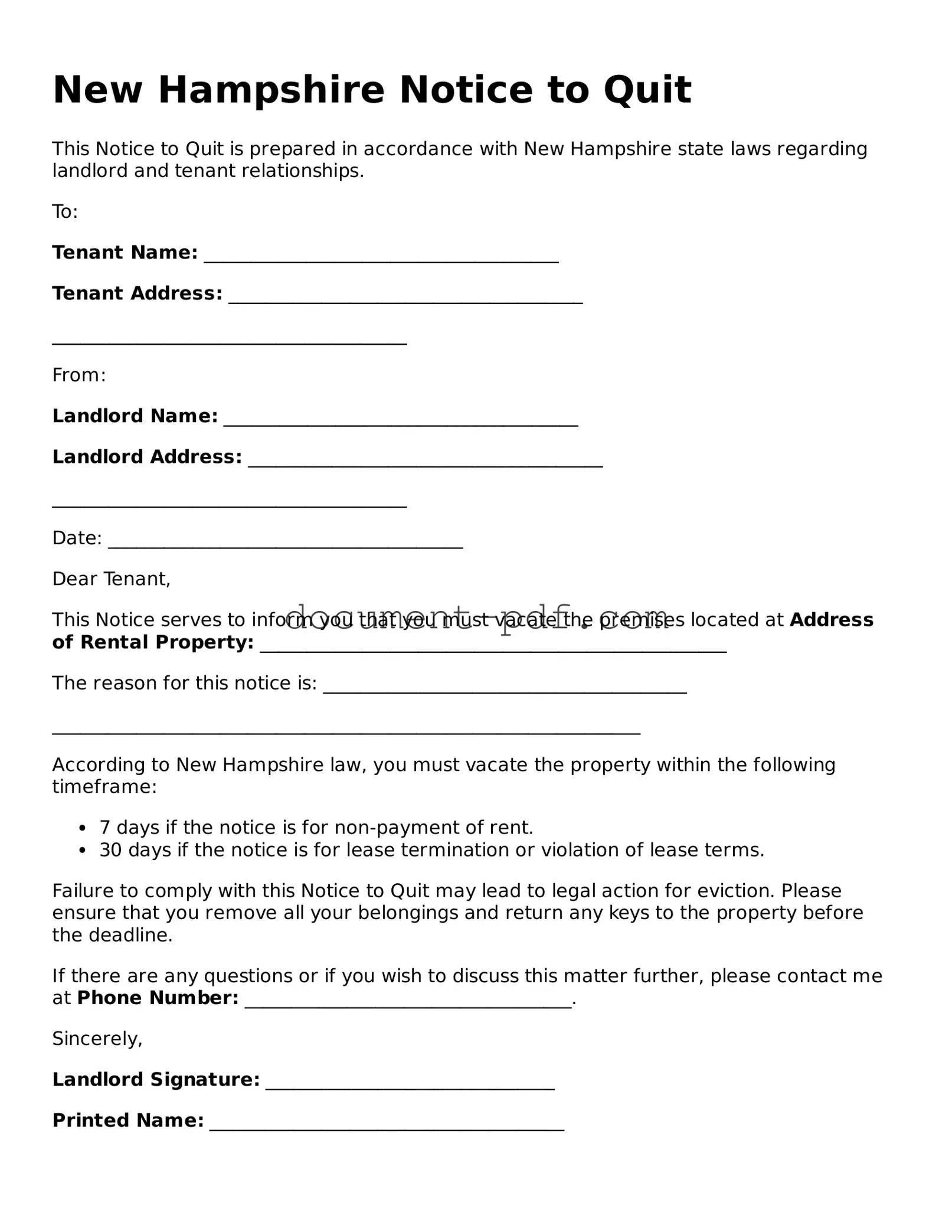New Hampshire Notice to Quit
This Notice to Quit is prepared in accordance with New Hampshire state laws regarding landlord and tenant relationships.
To:
Tenant Name: ______________________________________
Tenant Address: ______________________________________
______________________________________
From:
Landlord Name: ______________________________________
Landlord Address: ______________________________________
______________________________________
Date: ______________________________________
Dear Tenant,
This Notice serves to inform you that you must vacate the premises located at Address of Rental Property: __________________________________________________
The reason for this notice is: _______________________________________
_______________________________________________________________
According to New Hampshire law, you must vacate the property within the following timeframe:
- 7 days if the notice is for non-payment of rent.
- 30 days if the notice is for lease termination or violation of lease terms.
Failure to comply with this Notice to Quit may lead to legal action for eviction. Please ensure that you remove all your belongings and return any keys to the property before the deadline.
If there are any questions or if you wish to discuss this matter further, please contact me at Phone Number: ___________________________________.
Sincerely,
Landlord Signature: _______________________________
Printed Name: ______________________________________
